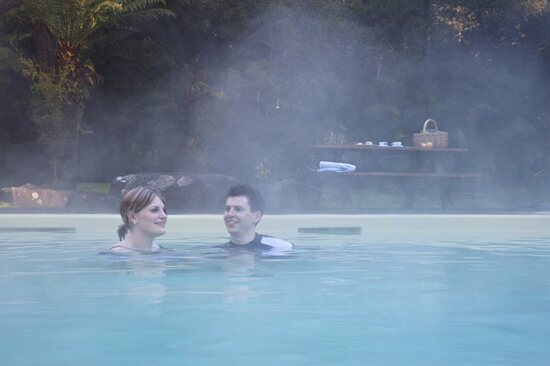Caves, thermal springs and a cafe in Far South Tasmania, 1.5 hours south from Hobart, Australia. Enjoy a guided cave tour, barbeque, swim and gentle bush walks, before continuing on to the nearby historic railway or gemstone fossicking. Far South Tasmania is a land of waterways, wilderness and wildlife. This is your one stop shop to plan and book your Far South Tasmania and Bruny Island and Huon Valley Escape.
|
For general cave and pool information phone the cave direct
03 6298 3209 |
For a Huon Valley Escape Itinerary including Hastings Caves
from 9am to 5pm only phone 0427 648465. Email anytime [email protected] |
Hastings (Newdegate) Cave ToursThe Hastings Experience,
|
Where to stay near Hastings CavesFar SouthSouthwest National Park, The Southern Ocean, fishing villages and the furthest south point in Australia.
Where to stay near Hastings CavesButtongrass Retreat is the perfect place to stay near Hastings Caves. Comfortable 2 bedroom, self contained, eco-cabin, just 10 minutes drive from Hastings Visitor Centre.
Walks in Far South Tasmania
Click to download this free guide to four easy walks near Hastings Caves For general cave and pool information phone
03 6298 3209 The Hastings Experience: Includes Hastings Cave, Thermal Springs, walks and facilities.
Please arrive at the Visitor Centre at least 30 minutes before the advertised tour time. Guided tours of Newdegate Cave led by Parks and Wildlife Service staff are available throughout the day. Tours take approximately 45 minutes. Tickets for the cave tour must be paid and collected at the Hastings Cave Visitor Centre. Please arrive 45 minutes prior to tour times, this allows time to buy or collect tickets and self-drive approximately 20 minutes to the cave car park. You will then take the short walk through the forest to the cave entrance - where the guide will meet you. For times and prices, see below. |
Hastings Caves History and Natural Features
The Hastings Experience,
Far South Tasmania
Hastings Caves in Tasmania, includes Newdegate Cave, the largest tourism cave in Australia. The caves of this region started to form approximately 40 million years ago and remained unseen until 1917, when timber workers discovered an entrance. They named their magnificent find after the governor of the time, Sir Francis Newdegate.
Formations in the cave are spectacular and include flowstone, stalactites, columns, shawls, straws, stalagmites and the unusual helictites - tendrils of calcite that grow in all directions in tiny filaments.
It is one of the few caves in Australia to have formed in dolomite, which is harder and heavier than limestone. (Dolomite is characterised by pearly white and pinkish crystal, and should not be confused with that famous Tasmanian rock, dolerite, which weathers into tall grey flutes such as those you see on Mt Wellington and Cradle Mountain). The underground temperate is naturally maintained at nine degrees Celsius (48 degrees Fahrenheit) all year round.
Formations in the cave are spectacular and include flowstone, stalactites, columns, shawls, straws, stalagmites and the unusual helictites - tendrils of calcite that grow in all directions in tiny filaments.
It is one of the few caves in Australia to have formed in dolomite, which is harder and heavier than limestone. (Dolomite is characterised by pearly white and pinkish crystal, and should not be confused with that famous Tasmanian rock, dolerite, which weathers into tall grey flutes such as those you see on Mt Wellington and Cradle Mountain). The underground temperate is naturally maintained at nine degrees Celsius (48 degrees Fahrenheit) all year round.
For up to date cave and pool information
phone 03 6298 3209
phone 03 6298 3209
Videos of Hastings Thermal Springs, Southport Lagoon and Cockle Creek, Far South Tasmania
|
|
|
|
|
Home
|
Choose
|
Getting to Tasmania
|
Help
|
About Us
|

















